This is the third in a four part series, which attempts to highlight two of the root issues in the long-standing war on America’s mustangs and burros and continues to be used as the hammer to prevent their rightful place in the American landscape.
Watch Mustang Medicine Video ~ Click Here
 “We have an awareness, a connection, a relationship with these other species…Yet there are human beings who don’t understand this, who have not been made aware of this. But then there are some who don’t want to hear it either, this story that we say – this is what the Black Hills is. It’s a sacred place. The Forest Service knows this. We told them over and over. They won’t listen. They won’t listen about the Black Hills. And they won’t listen about the national grasslands.”
“We have an awareness, a connection, a relationship with these other species…Yet there are human beings who don’t understand this, who have not been made aware of this. But then there are some who don’t want to hear it either, this story that we say – this is what the Black Hills is. It’s a sacred place. The Forest Service knows this. We told them over and over. They won’t listen. They won’t listen about the Black Hills. And they won’t listen about the national grasslands.”
Watch Mustang Medicine Video ~ Click Here
 “We have an awareness, a connection, a relationship with these other species…Yet there are human beings who don’t understand this, who have not been made aware of this. But then there are some who don’t want to hear it either, this story that we say – this is what the Black Hills is. It’s a sacred place. The Forest Service knows this. We told them over and over. They won’t listen. They won’t listen about the Black Hills. And they won’t listen about the national grasslands.”
“We have an awareness, a connection, a relationship with these other species…Yet there are human beings who don’t understand this, who have not been made aware of this. But then there are some who don’t want to hear it either, this story that we say – this is what the Black Hills is. It’s a sacred place. The Forest Service knows this. We told them over and over. They won’t listen. They won’t listen about the Black Hills. And they won’t listen about the national grasslands.” Charmaine White Face
Western Turf Wars:
The Politics of Public Lands Ranching
While the debate rages on as to whether equids are feral or native to North America, the Rainshadow Wild Horse Ecosystem referenced in the last post presented yet another issue that has received very little attention from our firmly rooted European academia.
History is always written by the victors but how accurate is it? According to various Native American tribes, including the Xeni Gwet’in that live in the Rainshadow ecosystem, wild horses never left the American continent.
The long-standing premise that wild horses arrived exclusively via Spanish explorers is supported by mainstream scholars assertions that no horse bones from the late pre-Columbian era have been found and horses are not pictured in any pre-Colombian American Indian “art.” Also the argument is used that because the Aztecs and other tribes of the Mexico region didn’t understand what a horse was, this proved that no horses inhabited the America’s.
As historians have dug through the records of the past, they have used white settlers accounts to estimate wild horse presence and distribution, timelines of arrivals and cultural specialists have illustrated how the introduction of the horse transformed many native cultures through their incorporation of riding them for hunting, exploring and war.
While it is predominately accepted that horses disappeared from North America between 8-13k years ago, only three hypothesis are embraced as to why this happened.
The first is massive climate change that caused most large mammals to die off, the second is called the overkill hypothesis, where newly migrated human populations hunted them to extinction and the third is, it was a combination of the first two.
Yet here is what Dr. Paul Haemig had to say regarding the “overkill hypothesis” in 2006 in his Evolution of Horses, Ecology Info #33;
“Although still unproven, the overkill hypothesis is a plausible explanation and should be given serious consideration. However, the reader needs to be wary of the political agenda of some of its supporters, and the dubious conclusions that they derive from it.”
“For example, the overkill hypothesis is sometimes cited as “evidence” that American Indians living in historical times, thousands of years after the extinctions, did not believe in preserving the environment…. Yet overkill proponents routinely make this dubious argument about American Indians for even longer periods of time (7,000-10,000 years).”
“The overkill hypothesis is also used by extremists to argue...Indians allegedly destroyed pristine character of these areas thousands of years ago by killing off their horses and other large mammals.”
And finally, Dr. Haemig mentions,
“Some researchers propose that North American caballine horses did not become extinct and instead persisted until historical times (Clutton-Brock 1981).”
While today, many Native American’s are actively engaged in legal entanglements that attempt to stop further resource exploitation and destruction of their environment, their actions and the philosophies that guide them provide little evidence to support cultural values that would hunt them to extinction as postulated in the “Overkill Theory” (unlike other cultures we know).
Since other large mammals also died off as well during this timeframe, the evidence suggests that climate change is the superior hypothesis and the most likely culprit in their demise. So is it then possible that some small isolated herds adapted and persisted despite the change?
Ivan T. Sanderson, once wrote: “There is a body of evidence both from the mainland of Central America and even from rock drawings in Haiti itself tending to show that the horse may have been known to man in the America’s before the coming of the Spaniards.” Science, 93, 507 (May 30, 194; p. 91).
Other Pre-Columbian evidence of wild horses still being present in North America after the climate change and before the arrival of the Spaniards includes:
*Giffin and Quimby investigated a site of horse bones found that was dated pre-2000 B.C.
*A horses skull was found buried with other Indian artifacts in a burial mound in Wisconsin dated around 700 A.D.
*Holland Hague posed an inquiry to scholars regarding documented horse bones radiocarbon dated to A.D. years prior to Columbus that was not followed up by the scholars involved.
The figure below is a view of an ancient Mound Builder carving of a white limestone horses head discovered in North Salem New York. The Mound Builder Era is estimated as occurring between 3000 AD to the 16th century A.D. (Click Here to learn more).
While the idea is still generally rejected by current scholars that horses still existed in North America prior to the arrival of the Spaniards, some Native Americans continue to insist that horses have always been here despite European based scholarly assertions.
The following quote is taken from a 1904 New York Times article titled “Fleet Little Broomtails” to help illustrate how prevalent this attitude was and continues to be. Click Here for full article.
“It is commonly understood that the broomtails are descended from American horses that escaped from the settlements: but the large number of pintos, (spotted ponies,) found in the herds would seem to indicate a strong infusion of Spanish, (mustang,) blood. Indeed, the Navajo Indians assert that wild horses have ranged the region of the Breaks since the days of the “Men-who-built-the-high-houses,” (cliff dwellers) And they ought to know how long their supply of horse steak has been available – but of course they don’t.” (Ed. Note: Cliff Dwellers have been assigned a timeline between the 11th-14th century).
In an article titled “The Nakota Always Had Horses” by Scott Bara, the author argues many points that American historians and government officials insist are the “only truths” and recounts the struggles Indigenous Peoples so often have regarding their own knowledge and history.
While many indigenous people’s recounting of history continues to be casually tossed into the garbage heap of “impossibilities”, many tribes view “our version” of history to be corrupted and exhibiting blatant disregard for the facts as they know them to be. (Click Here to learn more).
But back to the Rainshadow Wild Horse Ecosystem. This assessment was actually done as the result of the local Xeni Gwet’in First Nations Government and Peoples long standing legal battles with the Canadian government to preserve their lands, way of life and culture ~ a culture they insist has always been based on the wild horses found within the area ~ as far back as their history goes.
As their cultural values and history continue to be largely ignored, the cultural and historic values of the American Mustang and Burro by our own people have now joined the ranks of institutionalized genocide, as long-term holding facilities mirror modern day versions of Reservations; cleansed from the lands they use to call home and dumped in containment areas where they will spend the rest of their days, it would seem that this historical strategy of cultural decimation continues to be used just as effectively today as it was then.
Western Turf Wars:
The Politics of Public Lands Ranching
While the debate rages on as to whether equids are feral or native to North America, the Rainshadow Wild Horse Ecosystem referenced in the last post presented yet another issue that has received very little attention from our firmly rooted European academia.
History is always written by the victors but how accurate is it? According to various Native American tribes, including the Xeni Gwet’in that live in the Rainshadow ecosystem, wild horses never left the American continent.
The long-standing premise that wild horses arrived exclusively via Spanish explorers is supported by mainstream scholars assertions that no horse bones from the late pre-Columbian era have been found and horses are not pictured in any pre-Colombian American Indian “art.” Also the argument is used that because the Aztecs and other tribes of the Mexico region didn’t understand what a horse was, this proved that no horses inhabited the America’s.
As historians have dug through the records of the past, they have used white settlers accounts to estimate wild horse presence and distribution, timelines of arrivals and cultural specialists have illustrated how the introduction of the horse transformed many native cultures through their incorporation of riding them for hunting, exploring and war.
While it is predominately accepted that horses disappeared from North America between 8-13k years ago, only three hypothesis are embraced as to why this happened.
The first is massive climate change that caused most large mammals to die off, the second is called the overkill hypothesis, where newly migrated human populations hunted them to extinction and the third is, it was a combination of the first two.
Yet here is what Dr. Paul Haemig had to say regarding the “overkill hypothesis” in 2006 in his Evolution of Horses, Ecology Info #33;
“Although still unproven, the overkill hypothesis is a plausible explanation and should be given serious consideration. However, the reader needs to be wary of the political agenda of some of its supporters, and the dubious conclusions that they derive from it.”
“For example, the overkill hypothesis is sometimes cited as “evidence” that American Indians living in historical times, thousands of years after the extinctions, did not believe in preserving the environment…. Yet overkill proponents routinely make this dubious argument about American Indians for even longer periods of time (7,000-10,000 years).”
“The overkill hypothesis is also used by extremists to argue...Indians allegedly destroyed pristine character of these areas thousands of years ago by killing off their horses and other large mammals.”
And finally, Dr. Haemig mentions,
“Some researchers propose that North American caballine horses did not become extinct and instead persisted until historical times (Clutton-Brock 1981).”
While today, many Native American’s are actively engaged in legal entanglements that attempt to stop further resource exploitation and destruction of their environment, their actions and the philosophies that guide them provide little evidence to support cultural values that would hunt them to extinction as postulated in the “Overkill Theory” (unlike other cultures we know).
Since other large mammals also died off as well during this timeframe, the evidence suggests that climate change is the superior hypothesis and the most likely culprit in their demise. So is it then possible that some small isolated herds adapted and persisted despite the change?
Ivan T. Sanderson, once wrote: “There is a body of evidence both from the mainland of Central America and even from rock drawings in Haiti itself tending to show that the horse may have been known to man in the America’s before the coming of the Spaniards.” Science, 93, 507 (May 30, 194; p. 91).
Other Pre-Columbian evidence of wild horses still being present in North America after the climate change and before the arrival of the Spaniards includes:
*Giffin and Quimby investigated a site of horse bones found that was dated pre-2000 B.C.
*A horses skull was found buried with other Indian artifacts in a burial mound in Wisconsin dated around 700 A.D.
*Holland Hague posed an inquiry to scholars regarding documented horse bones radiocarbon dated to A.D. years prior to Columbus that was not followed up by the scholars involved.
The figure below is a view of an ancient Mound Builder carving of a white limestone horses head discovered in North Salem New York. The Mound Builder Era is estimated as occurring between 3000 AD to the 16th century A.D. (Click Here to learn more).
While the idea is still generally rejected by current scholars that horses still existed in North America prior to the arrival of the Spaniards, some Native Americans continue to insist that horses have always been here despite European based scholarly assertions.
The following quote is taken from a 1904 New York Times article titled “Fleet Little Broomtails” to help illustrate how prevalent this attitude was and continues to be. Click Here for full article.
“It is commonly understood that the broomtails are descended from American horses that escaped from the settlements: but the large number of pintos, (spotted ponies,) found in the herds would seem to indicate a strong infusion of Spanish, (mustang,) blood. Indeed, the Navajo Indians assert that wild horses have ranged the region of the Breaks since the days of the “Men-who-built-the-high-houses,” (cliff dwellers) And they ought to know how long their supply of horse steak has been available – but of course they don’t.” (Ed. Note: Cliff Dwellers have been assigned a timeline between the 11th-14th century).
In an article titled “The Nakota Always Had Horses” by Scott Bara, the author argues many points that American historians and government officials insist are the “only truths” and recounts the struggles Indigenous Peoples so often have regarding their own knowledge and history.
While many indigenous people’s recounting of history continues to be casually tossed into the garbage heap of “impossibilities”, many tribes view “our version” of history to be corrupted and exhibiting blatant disregard for the facts as they know them to be. (Click Here to learn more).
But back to the Rainshadow Wild Horse Ecosystem. This assessment was actually done as the result of the local Xeni Gwet’in First Nations Government and Peoples long standing legal battles with the Canadian government to preserve their lands, way of life and culture ~ a culture they insist has always been based on the wild horses found within the area ~ as far back as their history goes.
As their cultural values and history continue to be largely ignored, the cultural and historic values of the American Mustang and Burro by our own people have now joined the ranks of institutionalized genocide, as long-term holding facilities mirror modern day versions of Reservations; cleansed from the lands they use to call home and dumped in containment areas where they will spend the rest of their days, it would seem that this historical strategy of cultural decimation continues to be used just as effectively today as it was then.
"Fleet Little Broom Tail" was accessed at American Wild Horse Preservation Campaign's Press Section, which contains a highly comprehenisve historical review of over one hundred years of wild horse headlines, press releases and news stories dating from the late 1800's through the present. Click Here to learn more.
To access the Rainshadow Wild Horse Ecosystem Conservation Assessment in full, Click Here.
To access the Rainshadow Wild Horse Ecosystem Conservation Assessment in full, Click Here.
Photo at top is an ancient pictograph carved on rocks near Monte Vista Colorada and appeared in The Improvement Era October 1955. These carvings are considered by experts to be ancient. From Horses and The Book of Mormon, compiled by Glen W. Chapman Nov. 1996, Published by Benjamin G. Chapman, downloaded 10/28/08.
Photo of limestone horse carving was taken from Book Saga America by Dr. Berry Fell, published in 1980, pg. 57. Taken from same as above.


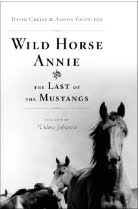








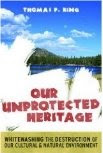



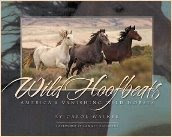




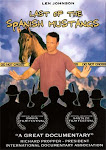





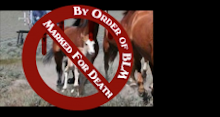

1 comment:
First I'd like to thank you for this informative blog, and would also just like to mention that the author of 'The Nakota Always Had Horse' is Scott Barta. I just wanted to mention this in case others would care to look up his articles. Thank you and looking forward to more from you...
Post a Comment